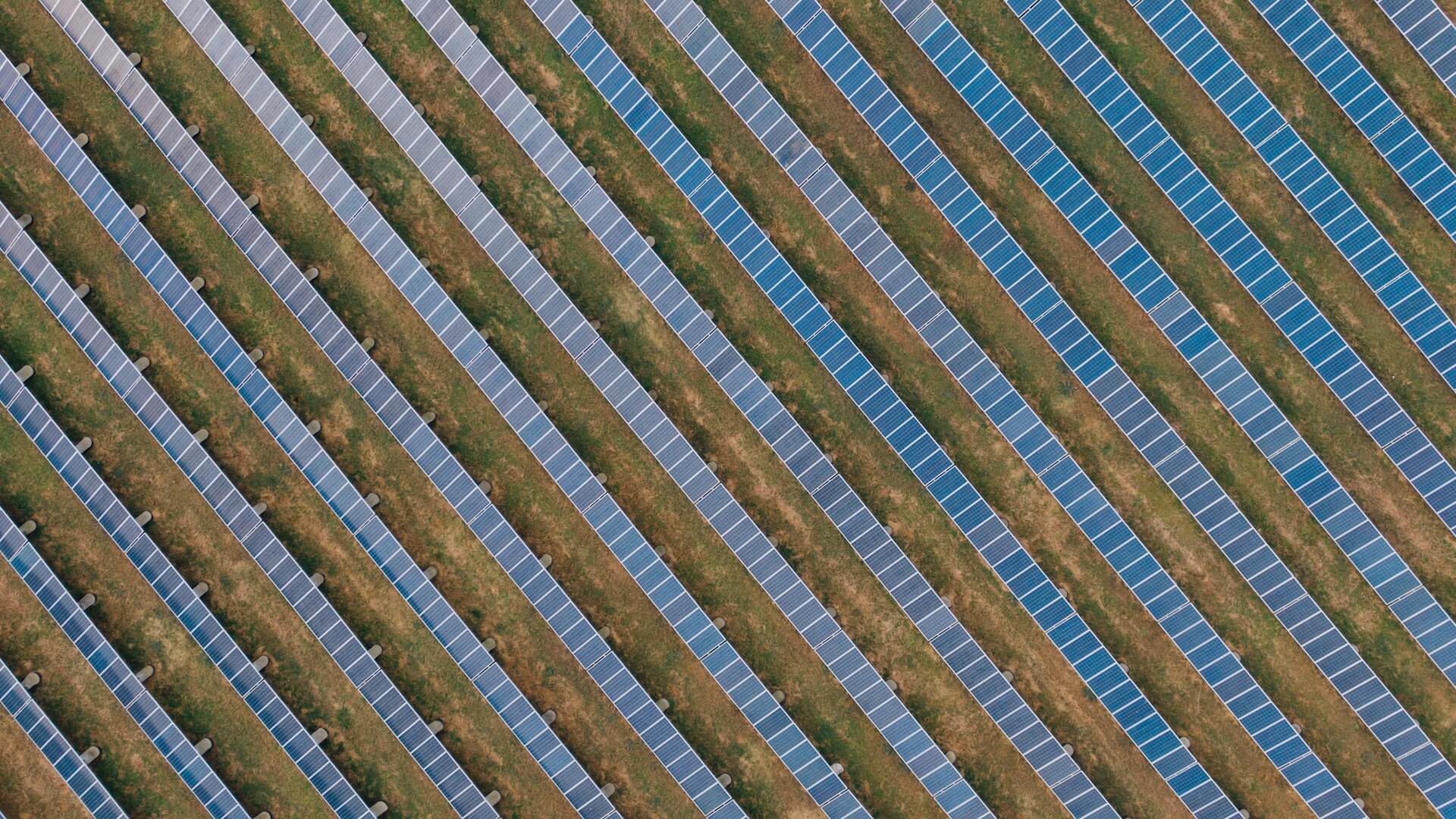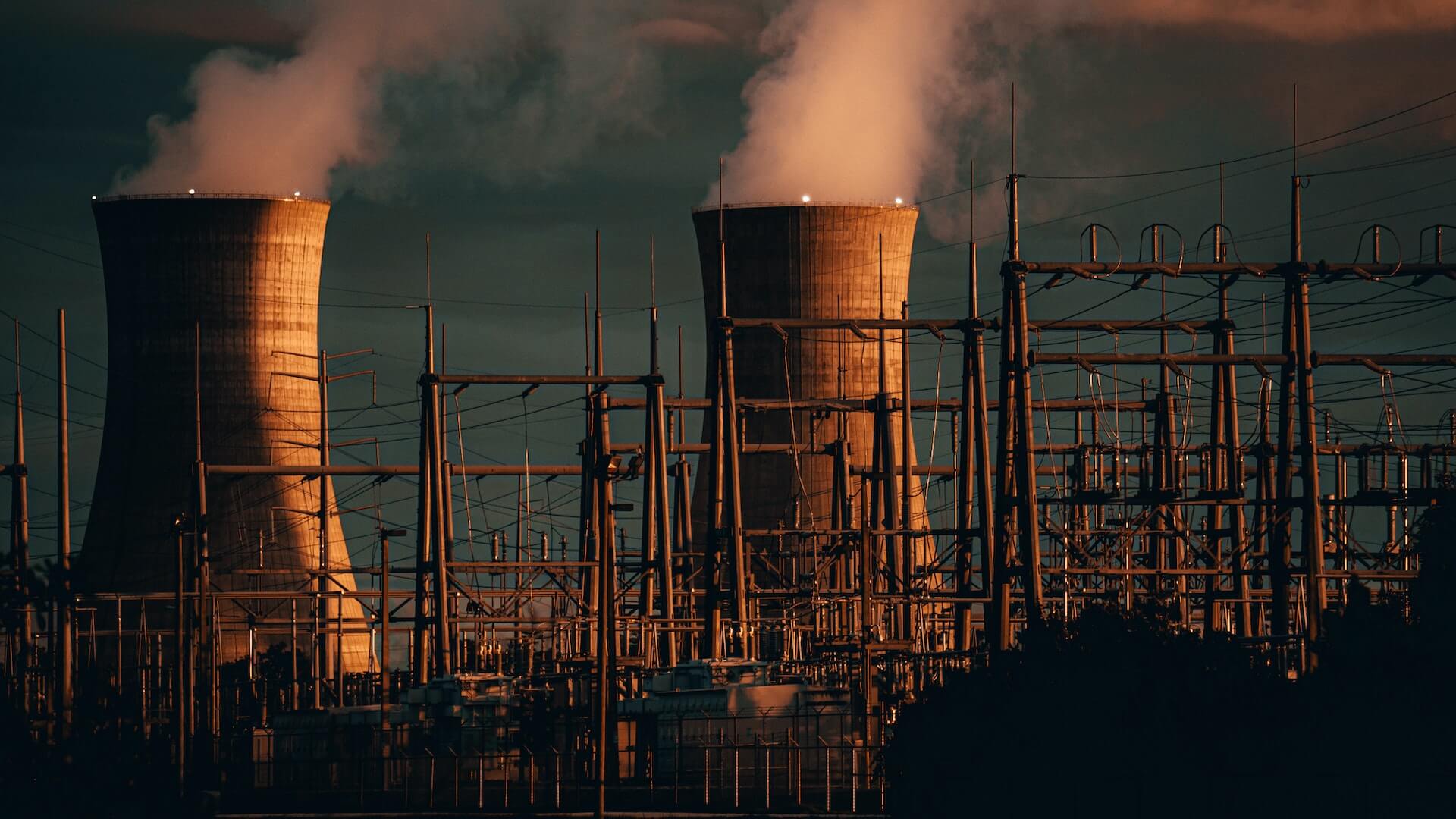As we approach a new decade, the energy industry is at a crossroads. The world is facing an energy crisis, with rising energy demands and the need to reduce carbon emissions. The energy sector is looking for new ways to innovate and become more sustainable. In this post, we will explore the latest innovations in the energy industry and how they are shaping the future of our planet. We will discuss renewable energy sources, such as solar, wind, and hydropower, and how they are becoming more efficient and affordable. We will also look at energy storage solutions, such as batteries and hydrogen fuel cells, and their potential to revolutionize the way we use and store energy. Join us as we explore the future of the energy industry, and discover how we can create a more sustainable world for generations to come.
Introduction: The evolving energy landscape
The energy industry is undergoing a significant transformation, driven by the need for sustainable solutions and advancements in technology. As the world grapples with the challenges of climate change and the depletion of traditional energy sources, there is a growing focus on finding innovative ways to meet our energy needs while minimizing environmental impact.

Renewable energy sources such as solar, wind, and hydroelectric power are gaining momentum as viable alternatives to traditional fossil fuels. These sources are not only abundant but also emit significantly lower greenhouse gas emissions, making them a crucial component of a sustainable energy future.
In addition to the rise of renewable energy, advancements in energy storage technologies are revolutionizing the industry. Batteries and other storage systems are becoming more efficient and cost-effective, enabling the effective integration of intermittent renewable energy sources into the grid. This paves the way for a more reliable and resilient energy system that can better accommodate fluctuations in supply and demand.
Another key aspect of the evolving energy landscape is the increasing adoption of smart grid technologies. By leveraging digital communication and automation, smart grids enable more efficient and optimized electricity distribution. This technology allows for real-time monitoring, demand response, and the integration of decentralized energy sources, ultimately improving grid reliability, reducing energy waste, and empowering consumers to actively participate in managing their energy consumption.
Furthermore, the future of the energy industry lies in the convergence of different sectors, such as energy, transportation, and information technology. The emergence of electric vehicles, coupled with the development of charging infrastructure, presents an opportunity for a more sustainable transportation system that relies on clean energy. Moreover, the integration of artificial intelligence and data analytics can enhance energy management systems, enabling predictive maintenance, energy optimization, and personalized energy services.
The need for innovation and sustainability in the energy industry
The energy industry is at a critical juncture, facing the ever-increasing demand for power while simultaneously addressing the pressing need for sustainability. The challenges are immense, but so are the opportunities for innovation and progress.
As the world grapples with the urgency of reducing carbon emissions and transitioning to renewable energy sources, it has become evident that traditional methods of power generation are no longer sufficient. The need for innovation in the energy industry has never been more pronounced.
Innovations in renewable energy technologies are paving the way for a cleaner and more sustainable future. Solar and wind power, once considered niche alternatives, have now become mainstream sources of energy. Advancements in battery storage technology have made it possible to store excess energy generated from renewable sources, ensuring a continuous and reliable power supply.
Moreover, the integration of smart grids and artificial intelligence has revolutionized the way energy is generated, distributed, and consumed. These technologies allow for real-time monitoring of energy consumption, optimizing energy usage, and reducing wastage. Additionally, they enable the seamless integration of decentralized energy sources, such as rooftop solar panels and community-based wind farms, into the grid.
Sustainability is not only about reducing carbon emissions; it also encompasses responsible resource management. The energy industry must embrace sustainable practices throughout the entire value chain, from exploration and extraction to distribution and consumption. This includes minimizing environmental impact, reducing water usage, and promoting circular economy principles.
Innovation and sustainability go hand in hand. By investing in research and development, the energy industry can discover new ways to harness clean and abundant energy sources. This will not only help mitigate the effects of climate change but also create new job opportunities, drive economic growth, and enhance energy security.
Renewable energy sources: The key to a sustainable future
Renewable energy sources have emerged as the key to a sustainable future in the energy industry. With growing concerns about climate change and the depletion of traditional fossil fuels, the need for cleaner and more sustainable alternatives has become paramount.

The advancements in renewable energy technologies have been nothing short of revolutionary. Solar power, for instance, has seen a massive surge in popularity and adoption worldwide. Solar panels are now not only more efficient but also more affordable, making it an attractive option for both residential and commercial use. The ability to harness the power of the sun not only reduces our carbon footprint but also provides a reliable and sustainable source of energy.
Wind energy is another rapidly growing sector in the renewable energy industry. With the development of larger and more efficient wind turbines, harnessing the power of wind has become increasingly viable. Wind farms are now capable of generating substantial amounts of electricity, contributing to the overall reduction of greenhouse gas emissions.
Hydroelectric power, geothermal energy, and bioenergy are also playing significant roles in the shift towards renewable energy sources. Hydroelectric plants utilize the power of flowing water to generate electricity, while geothermal energy harnesses the heat from within the Earth. Bioenergy, on the other hand, utilizes organic matter such as agricultural waste or dedicated energy crops to produce power. All these sources offer sustainable and environmentally friendly alternatives to traditional fossil fuel-based energy generation.
Advancements in solar energy technology
Advancements in solar energy technology have been revolutionizing the energy industry and paving the way for a more sustainable future. Traditional solar panels have come a long way, with improvements in efficiency, durability, and aesthetics. These innovations have made solar energy a viable and attractive option for both residential and commercial use.
One significant advancement in solar technology is the development of thin-film solar cells. These cells are lightweight, flexible, and can be integrated into various surfaces, such as building materials or even wearable devices. This opens up a whole new realm of possibilities for solar energy integration, making it more accessible and versatile than ever before.
Another exciting innovation is the concept of solar energy storage. Traditionally, solar energy systems would generate electricity during the day, and any excess energy would be fed back into the grid. However, with the development of efficient energy storage solutions, such as lithium-ion batteries, solar power can now be stored for use during nighttime or cloudy days. This eliminates the dependence on traditional power sources and allows for a more reliable and sustainable energy supply.
Furthermore, advancements in solar panel design have made them more aesthetically pleasing and seamlessly blend with architectural elements. Solar roof tiles and solar glass windows are examples of how solar technology can be integrated into building structures without compromising their visual appeal. These innovations encourage the widespread adoption of solar energy, as they address concerns regarding the impact on the overall design and aesthetics of buildings.
The role of wind power in the energy transition
With an increasing focus on reducing greenhouse gas emissions and dependence on fossil fuels, the need for renewable energy sources has become more apparent than ever. Wind power, in particular, has emerged as a significant player in the global energy landscape.
Harnessing the power of wind to generate electricity has numerous advantages. Firstly, wind energy is renewable and abundant, making it a viable long-term solution. Unlike fossil fuels that deplete over time, the wind is a natural resource that will continue to exist indefinitely. Additionally, wind power is a clean source of energy, producing no harmful emissions or pollutants that contribute to air pollution or climate change. This makes it a sustainable alternative to traditional energy sources, aligning with global efforts to combat climate change.
In recent years, technological advancements in wind turbine design and efficiency have significantly bolstered the growth of the wind power industry. Modern wind turbines are larger, more efficient, and capable of generating higher amounts of electricity. Additionally, the development of offshore wind farms has opened up new possibilities for wind power generation, as offshore locations often experience stronger and more consistent winds.
The integration of wind power into the energy grid has also been facilitated by advancements in smart grid technology. These intelligent systems allow for better management and distribution of electricity generated by wind farms, ensuring a reliable and stable power supply. Furthermore, the use of energy storage solutions, such as batteries, enables the storage of excess wind power for times when demand exceeds supply.
The benefits of wind power extend beyond its environmental advantages. The industry has also created numerous job opportunities and economic growth in regions with favorable wind resources. Wind farms not only require skilled workers for construction and maintenance but also contribute to the local economy through investments and tax revenues.
Harnessing the potential of hydropower
Hydropower, also known as hydroelectric power, has long been recognized as a reliable and renewable source of energy. As we look towards the future of the energy industry, it becomes increasingly clear that harnessing the potential of hydropower is a crucial step towards achieving sustainability.
The concept behind hydropower is simple yet powerful. It utilizes the force of flowing or falling water to generate electricity. This energy conversion process is achieved through the use of turbines and generators, which are powered by the kinetic energy of the water.
One of the key advantages of hydropower is its ability to provide clean and renewable energy on a large scale. Unlike fossil fuels, which emit harmful greenhouse gases and contribute to climate change, hydropower systems produce negligible greenhouse gas emissions. This makes it an environmentally friendly alternative that can significantly reduce our carbon footprint and mitigate the effects of global warming.
Moreover, hydropower offers a reliable and consistent source of electricity. Unlike solar or wind power, which are dependent on weather conditions, water can be stored in reservoirs and released as needed to generate electricity. This flexibility ensures a steady supply of energy without compromising its quality or consistency.
In addition to its sustainability and reliability, hydropower also brings various socio-economic benefits. The construction and maintenance of hydropower plants create job opportunities and stimulate economic growth in local communities. Furthermore, hydropower projects often provide recreational opportunities, such as boating and fishing, which contribute to tourism and enhance the quality of life for nearby residents.
To fully harness the potential of hydropower, ongoing innovation and advancements are essential. Researchers and engineers are continuously exploring new technologies and techniques to optimize efficiency, minimize environmental impacts, and increase the scalability of hydropower systems. From improvements in turbine design to the integration of smart grid technologies, the future of hydropower holds tremendous potential for further advancements.
Innovations in geothermal energy
Geothermal energy, a renewable energy source that utilizes the heat from the Earth’s core, is seeing remarkable advancements and innovations that hold great promise for the future of the energy industry. As the world seeks sustainable alternatives to fossil fuels, geothermal energy has emerged as a key player in the transition towards cleaner and greener power generation.
One notable innovation in geothermal energy is the development of enhanced geothermal systems (EGS). Unlike traditional geothermal systems that rely on naturally occurring geothermal reservoirs, EGS harnesses the Earth’s heat by creating artificial reservoirs through hydraulic fracturing. This breakthrough technology allows for geothermal energy extraction in areas that were previously considered unsuitable, significantly expanding the potential for geothermal power generation.
Furthermore, advancements in drilling techniques have made geothermal energy more accessible and cost-effective. The use of directional drilling, where wells are drilled at an angle to reach deeper and hotter regions, has increased the efficiency and productivity of geothermal systems. Additionally, slim-hole drilling techniques have reduced the environmental impact and cost of drilling, making geothermal energy a more viable option for widespread adoption.
Innovations in geothermal power plant designs have also contributed to the growth of this renewable energy source. Binary cycle power plants, for instance, use a closed-loop system that allows for the utilization of lower temperature geothermal resources. This means that regions with moderate geothermal heat can now tap into their energy potential, further diversifying the geothermal energy landscape.
Another exciting development is the integration of geothermal energy with other renewable energy sources, such as solar and wind power. By combining these sources, a more stable and reliable energy supply can be achieved. Geothermal energy can provide a consistent base load, while solar and wind power can supplement during peak demand periods. This integration enhances the overall sustainability and resilience of the energy grid.
The promise of bioenergy and biomass
Bioenergy refers to the conversion of organic materials, such as plants and agricultural waste, into usable energy sources. This can be achieved through various processes such as combustion, anaerobic digestion, or biochemical conversion. One of the major advantages of bioenergy is its renewable nature. Unlike finite fossil fuels, biomass can be continuously replenished, making it a more sustainable choice.
Biomass, on the other hand, refers to the organic matter derived from living organisms. This can include wood, crop residues, algae, and even dedicated energy crops grown specifically for energy production. Biomass can be used to generate heat, electricity, or biofuels, providing a versatile and flexible energy source.
The potential benefits of bioenergy and biomass are numerous. Firstly, they offer a significant reduction in greenhouse gas emissions compared to fossil fuels. By utilizing organic waste materials, bioenergy can help mitigate climate change by minimizing carbon dioxide emissions and promoting a circular economy.
Moreover, bioenergy and biomass can contribute to energy independence. With the ability to produce energy locally from readily available resources, countries can reduce their reliance on imported fossil fuels, enhancing their energy security.
Another advantage of bioenergy is its potential for rural development. Biomass resources are often found in rural areas, providing economic opportunities and job creation in these regions. By investing in bioenergy infrastructure, communities can benefit from a sustainable energy source while boosting local economies.
However, it is important to consider the challenges associated with bioenergy and biomass. Ensuring sustainable practices, such as responsible land use and resource management, is crucial to prevent negative environmental impacts. Additionally, advancements in technology and research are needed to improve efficiency and maximize the potential of these energy sources.
Energy storage solutions for a reliable and sustainable grid
In today’s rapidly evolving world, the energy industry is undergoing a transformative shift towards sustainability and innovation. As we strive to reduce our carbon footprint and mitigate the effects of climate change, one of the key challenges lies in ensuring a reliable and sustainable grid. This is where energy storage solutions play a crucial role.

Energy storage technologies serve as a bridge between intermittent renewable energy sources, such as solar and wind, and the demand for electricity. By storing excess energy during times of high generation and releasing it during peak demand periods, energy storage systems contribute to a more balanced and efficient grid. This not only enhances the reliability of the energy supply but also reduces the need for expensive infrastructure upgrades.
One of the most promising energy storage technologies is battery storage. With advancements in lithium-ion battery technology, we are witnessing a remarkable increase in energy storage capabilities. These batteries are not only efficient but also have a longer lifespan, making them an ideal choice for residential, commercial, and utility-scale applications.
Moreover, innovative solutions like pumped hydro storage, compressed air energy storage, and thermal energy storage are also gaining traction. Pumped hydro storage utilizes the power of gravity to store and release energy by pumping water uphill during off-peak hours and releasing it downhill to generate electricity when needed. Compressed air energy storage compresses air and stores it in underground caverns, which can then be released to drive turbines during peak demand. Thermal energy storage, on the other hand, captures and stores heat or cold for later use, providing efficient heating and cooling solutions.
These diverse energy storage solutions not only contribute to a more reliable grid but also enable the integration of renewable energy sources on a larger scale. They help address the intermittent nature of renewables, ensuring a continuous and sustainable energy supply.
Government policies and incentives driving the energy transition
As concerns over climate change and environmental degradation continue to intensify, governments around the world are implementing various measures to encourage the adoption of clean energy solutions and reduce reliance on fossil fuels.
One of the key ways in which governments are promoting the energy transition is through the implementation of renewable energy targets. Many countries have set ambitious goals to increase the share of renewable energy in their overall energy mix. These targets provide a clear roadmap for the industry and encourage investment in renewable energy infrastructure such as wind farms, solar power plants, and hydroelectric projects.
In addition to targets, governments are also providing financial incentives to support the growth of renewable energy. This includes subsidies, tax credits, and grants that make renewable energy projects more economically viable for investors. By reducing the financial barriers and risks associated with renewable energy development, these incentives attract more private sector involvement and accelerate the deployment of clean energy technologies.
Furthermore, governments are implementing regulatory frameworks and standards to create a favorable environment for clean energy adoption. This includes streamlining permitting processes, ensuring grid integration for renewable energy sources, and implementing mechanisms to promote energy efficiency. These policies provide a stable and supportive framework for energy companies, encouraging innovation and investment in sustainable energy solutions.
Government policies and incentives also extend beyond the promotion of renewable energy. Many countries are implementing carbon pricing mechanisms, such as carbon taxes or emissions trading systems, to incentivize the reduction of greenhouse gas emissions. These market-based approaches create economic incentives for industries to transition towards low-carbon alternatives and invest in energy-efficient technologies.
Challenges and barriers to a sustainable energy future
While the future of the energy industry holds tremendous potential for innovation and sustainability, it is not without its fair share of challenges and barriers. As we strive towards a more sustainable future, it is crucial to acknowledge and address these obstacles to ensure progress.

One of the key challenges is the reliance on fossil fuels for energy production. Despite the growing awareness of the negative environmental impacts associated with fossil fuels, they still dominate the global energy mix. Transitioning away from fossil fuels and towards renewable energy sources poses significant challenges, including the need for substantial investment, infrastructure development, and policy changes.
Another barrier to a sustainable energy future is the lack of public awareness and understanding. Many individuals are not fully aware of the benefits and potential of renewable energy sources. Educating the public about the importance of sustainability and promoting the advantages of clean energy can help overcome this barrier.
Additionally, the integration of renewable energy into existing energy systems can be complex. The intermittent nature of some renewable sources, such as solar and wind, presents challenges in terms of grid stability and energy storage. Developing efficient storage solutions and implementing smart grid technologies are crucial for the widespread adoption of renewable energy.
Furthermore, the energy industry is heavily regulated, and outdated policies and regulations can hinder the transition to a sustainable future. Governments and policymakers must work together to create supportive frameworks that encourage renewable energy development, remove barriers to entry, and provide incentives for innovation.
Financial considerations also play a significant role in the adoption of sustainable energy solutions. The initial investment costs for renewable energy technologies can be high, making it challenging for smaller businesses and developing countries to embrace these alternatives. Access to affordable financing options and innovative funding models can help overcome this barrier.
The role of businesses and consumers in promoting sustainability
The future of the energy industry heavily relies on the joint efforts of businesses and consumers in promoting sustainability. As the global demand for energy continues to rise, it becomes increasingly important for both parties to actively participate in sustainable practices and initiatives.
Businesses play a crucial role in driving the shift towards sustainability. They have the power to implement eco-friendly practices within their operations, invest in renewable energy sources, and develop innovative technologies that reduce carbon emissions. By adopting sustainable practices, businesses not only contribute to a cleaner and greener future, but they also enhance their reputation, attract environmentally-conscious customers, and potentially reduce their operational costs in the long run.
Consumers, on the other hand, have the power to drive demand for sustainable products and services. By making conscious choices and supporting businesses that prioritize sustainability, consumers can create a market demand for environmentally-friendly alternatives. This demand, in turn, can incentivize businesses to invest more in sustainable practices and technologies.
Furthermore, consumers can actively participate in reducing energy consumption by adopting energy-efficient habits in their daily lives. Simple actions like using energy-efficient appliances, practicing proper insulation, and conserving water and electricity can significantly contribute to the overall sustainability of the energy industry.
Conclusion
As we highlighted in this blog post, there are numerous exciting developments that are revolutionizing the way we produce and consume energy. From renewable energy sources to smart grid technologies, the energy landscape is evolving rapidly. By embracing these innovations and adopting sustainable practices, we can pave the way for a greener, more efficient future. Together, let’s work towards a world where clean and renewable energy powers our lives, preserving our planet for generations to come.



